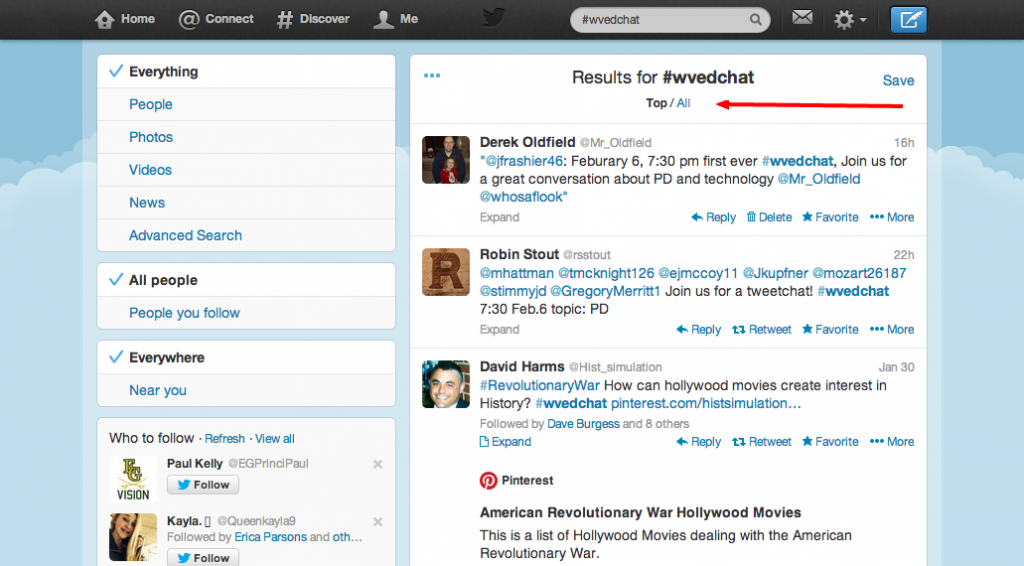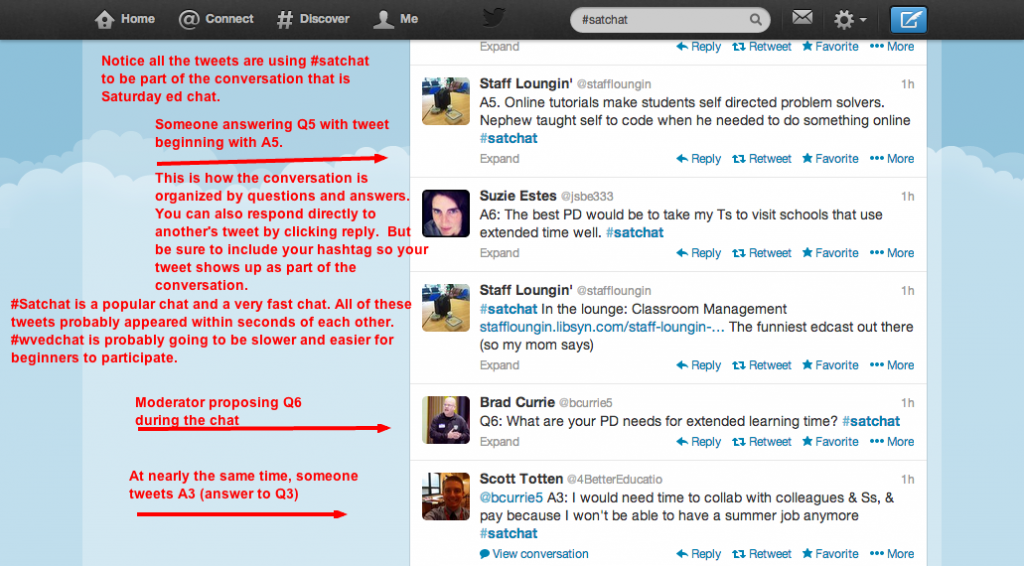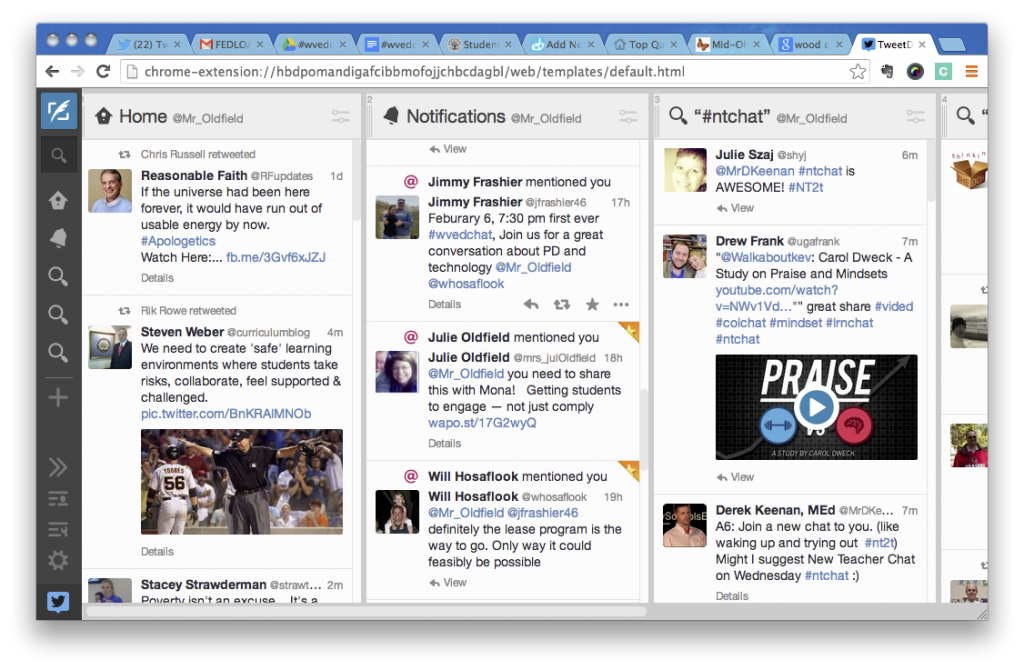Edcamp Columbus Reflection: Julie
Well….here goes nothing. I’m a first-time guest blogger tonight, so this may be rough but ultra important to put into words. For any readers who do not know me, I am Derek’s wife and also a middle school Reading teacher. It has now been a little over 24 hours since Edcamp Comumbus ended, and Derek and I are still thinking of new ideas and stories to share from our experience. I was excited about attending Edcamp, but I honestly was going for the experience to aid Derek and I in holding the April 5th Parkersburg Edcamp. I didn’t know what to expect from the day other than that. Oh…..was I in for a shock or what!?
When we arrived at Clark Hall, I was immediately astonished by the absolute beauty and comfort in that building. What a wonderful school…and we didn’t even see the half of it! Don’t get me wrong, I love where we live/work, but I immediately texted my parents to tell them we would be moving to Gahanna, OH soon if I had a choice! 🙂 As the day went on, I found even more reasons to fall in love with the area, and the people became number 1 on that list! Edcamp began with everyone gathering in a commons area. It was immediately apparent that the attendees were honestly excited to be there, even if we were a group of teachers working on a Saturday at 8:00 AM. As Toby (one of the Edcamp Columbus coordinators) introduced himself and the event, I was still in “gather information for our event” mode. I was guilty of analyzing how people were grouped, how the session board was laid out, how people handled the wifi not working immediately, and where to go next in this overwhelmingly awesome building. By the time I got settled online, I studied the session board and was so impressed at how smoothly it came together. The hardest part of the morning so far…..trying to choose which session to attend! With so many good sessions suggested, it was difficult to pick ONLY 1 to attend per time slot.
Derek and I chose to go to the first session together (mainly because of my introverted, shy nature). After seeing how relaxed and down to earth everyone was, I got the nerve to attend session 2 without my “other half” to protect me. 🙂 And…..I SURVIVED. I’m so glad that we decided to separate as we did, because our dilemma of being able to only be a part of 4 complete sessions was solved. We could split up and share what we learned in our separate places after the day ended…..and just for the record, we are still sharing!
The four sessions I attended were designing your own school, blended learning strategies, differentiated instruction, and standards based grading. Two of the sessions were suggested by teachers who stated that they were attempting the topic in their classroom, but they didn’t want to moderate necessarily. This was a major concern for our upcoming Edcamp Parkersburg, so I was excited to see it actually happen. After that person stated that they placed the topic on the session board, everyone in the room just started talking about their experience, or lack of experience with the topic at hand. It was so powerful to see a room full of people (administrators, board office employees, teachers, college students, and technology coordinators) come together and hold a professional, positive conversation. As I sat in each session, I also followed #edcampcbus on Twitter. It was so beneficial to be sitting in one room hearing the discussion and also watching comments from other sessions at the same time. I strongly suggest that you take time to get on Twitter, search #edcampcbus and just scroll through the amazing conversations that were held during the day. It’s unreal that such rich discussions can be held in person and online simultaneously. Throughout the day I was able to connect with educators in many ways and one lasting way is through Twitter. I plan to stay in contact with many of the people I met Saturday, including attending other Edcamps they will be holding, and a possible training on a Learning Management System for my classroom (I could do a whole other post about that experience). Derek has been trying to stress the importance of continuing to connect and build a PLN to me. I have taken steps towards both of these, but no where as much as I should. This weekend changed that for me! I officially see the immense need and benefit of connecting with other educators in any way possible! What better way to improve learning for my students, than to talk to other teachers about what they are doing in their classrooms!? It’s so simple, yet so easy to ignore!
Without going into specifics (and for the fact that I could go on forever about this), I will try to wrap up my reflection on the day. As Derek mentioned in his post, the day ended with a smackdown with everyone back in the community lounge area. I had NO IDEA what to expect as this was my very first “smackdown”. Now, I was still gathering ideas for our Edcamp, but I was way more engaged in “gather info for my students and classroom practices” mode by this point. If I wasn’t already excited to take ideas back to Parkersburg, the smackdown solidified my excitement! Listening to various educators explain what they learned and how they wanted to “make a change” in different areas of their classrooms, I was yet again reminded of the raw passion that people still hold for teaching in general! It is so easy to latch onto negativity and complain about each little thing that you encounter on a daily basis in schools, but this weekend reminded me that positivity and excitement is contagious….and I plan to carry that back to Parkersburg!!
Ok…so, I could say so much more, but must stop. Sorry for the length of this, but it was truly a wonderful experience that I will never forget. Thank you #edcampcbus and to my hubby for the amazing experience…my students will thank you soon enough! 🙂




